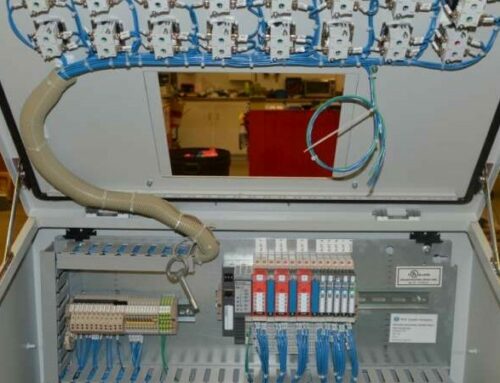M.R. Snyder designs and develops automation systems for a wide range of industries, including metal, paper, film, fiber & tape, and textile. One of the machines that is often part of an automated system in these industries is the winder. Since winding machines are a critical part of these applications, it’s important to understand the various options and components that can be included to increase productivity and efficiency. At M.R. Snyder, we have a great deal of experience with winders.
Winder Solutions
A winder is a machine that wraps a material, such as paper, plastic, or a textile onto a center roll. Winders are generally classified based on the material they wind. A metal bar is often at the center of the roll. The metal bar may be circular, square, or maybe a different shape to achieve a certain specification. A circular bar is often used for speed, a square bar provides greater torque.
An essential part of an automated system includes the sensors that are built in to monitor the process. Sensors are devices that monitor, detect, and respond to a change in conditions in an automated production line or machine. An alert is then be sent to a controller, such as a PLC. This is important in maintaining efficiency in systems that operate autonomously. Although there are many different types of sensors that provide feedback regarding specifications such as temperature, humidity, or pressure, they generally fall under one of two categories – contact sensors and non-contact sensors.
Contact sensors function only when in direct physical contact with the object or substance being measured. An example of this is a thermometer submerged in a liquid or a float that gauges the level of a fluid.
Non-contact sensors measure a physical property such as thickness, proximity, displacement, or distance without direct contact. Instead of relying on physical contact or mechanical movement to detect changes, non-contact sensors rely on electrical, magnetic, optical, and/or sonic technologies. An example of non-contact sensors is a radiation thermometer that measures the radiation emitted from an object to detect temperature changes.
Other examples of non-contact sensors use pressurized air to measure distances or dimensions, magnetic fields to gauge how far the sensor is to the target, high-frequency sound waves to measure distance, the intensity of light to measure displacement and distance, and many more.
There are so many variations and options available when creating an automated industrial system. M.R. Snyder has the knowledge and experience to engineer a successful system, taking into account all the many technologies available to accomplish the desired results. We understand that each industry has different goals and requirements. Let us provide a customized industry-specific automation and web-handling solution for your company.


